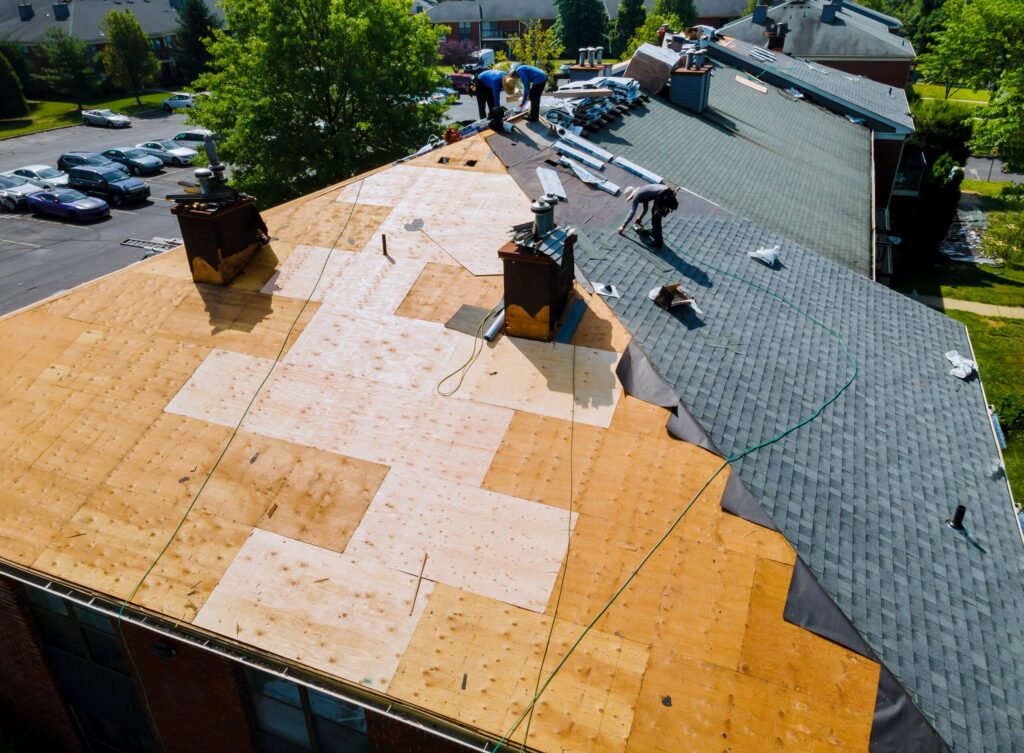Replacing your old roof is an important decision that should not be taken lightly. A roof is an essential component of a building, protecting it from the elements and keeping you and your possessions safe and dry. Over time, roofs can deteriorate and become damaged, which can compromise their ability to perform their function effectively. This is why it’s crucial to replace your old roof when it reaches the end of its lifespan or shows signs of severe wear and tear. However, there are a few things to consider when getting a roof replacement. Keep reading to learn about the process of replacing your old roof.
Factors Affecting New Roof Cost
Many variables will ultimately determine the expense of your new roof. One of the most significant factors is the material you choose to use. There are several popular options, such as asphalt shingles, metal roofing, and slate. Asphalt shingles are typically the most affordable option but may need to be replaced more often than other materials. Metal roofing can be more expensive initially but can save you money in the long run by requiring fewer repairs and lasting longer. Slate is a luxurious and durable material that adds both beauty and value to your home but comes with a higher price tag.
The location of your home further affects the final cost. For example, a new roof cost Massachusetts will be different from the cost of a new roof in Florida. Additionally, roofs in more urban areas may cost more due to higher living expenses and increased demand for roofers. However, this may be offset by any potential local incentives for energy-efficient materials or building techniques, as well as access to a wider range of contractors to choose from, potentially leading to competitive pricing.
Labor is another crucial factor to consider when calculating costs. Experienced roofers will often charge more for their expertise but can provide a higher quality installation that lasts longer and is less susceptible to problems. Additionally, the size, slope, and complexity of your roof will impact the labor costs. Larger or more intricate roofs will require more time and effort, driving up the overall price.
Obtaining and Comparing Estimates
One of the most important steps in replacing your old roof is obtaining estimates from multiple contractors. By seeking out quotes, you can gain a better understanding of the current market price for your specific project and use this information to make an informed decision. When comparing estimates, remember to take factors such as experience, reputation, and included warranties into account, along with the overall cost. This ensures you’ll receive quality service and materials at a fair and reasonable price.
Additionally, don’t hesitate to ask questions or request references. Gaining insight into a contractor’s past work and client experiences can provide valuable peace of mind before moving forward. Transparency and open communication are essential to a smooth and successful project, so always prioritize contractors who are willing to provide detailed information about their capabilities and pricing structure. Business ratings from a resource like the Better Business Bureau can also be helpful when comparing roofing companies and estimates.
Preparing for a Roof Replacement
Once you’ve selected a contractor, it’s essential to prepare for the installation process. Discuss the specific timeline and scope of work with your roofing contractor, including factors such as waste disposal, material delivery, and any potential disruptions to your daily routine or neighboring properties. This helps set expectations and ensures a smooth project from start to finish.
Be sure to notify your neighbors of the upcoming project, as they may be affected by temporary noise or logistical concerns. Also, take precautions to protect your home and possessions during the installation process. Remove any fragile items from your attic or upper floors, as vibrations from work might cause them to shift or fall. Similarly, consider covering outdoor plants or furniture to safeguard them from debris.
Ultimately, a roof replacement is a significant investment, but one that will provide you and your family with lasting benefits such as improved energy efficiency and enhanced curb appeal for years to come. With proper planning and a qualified roofing contractor, your new roof can provide years of protection and value to your home.

